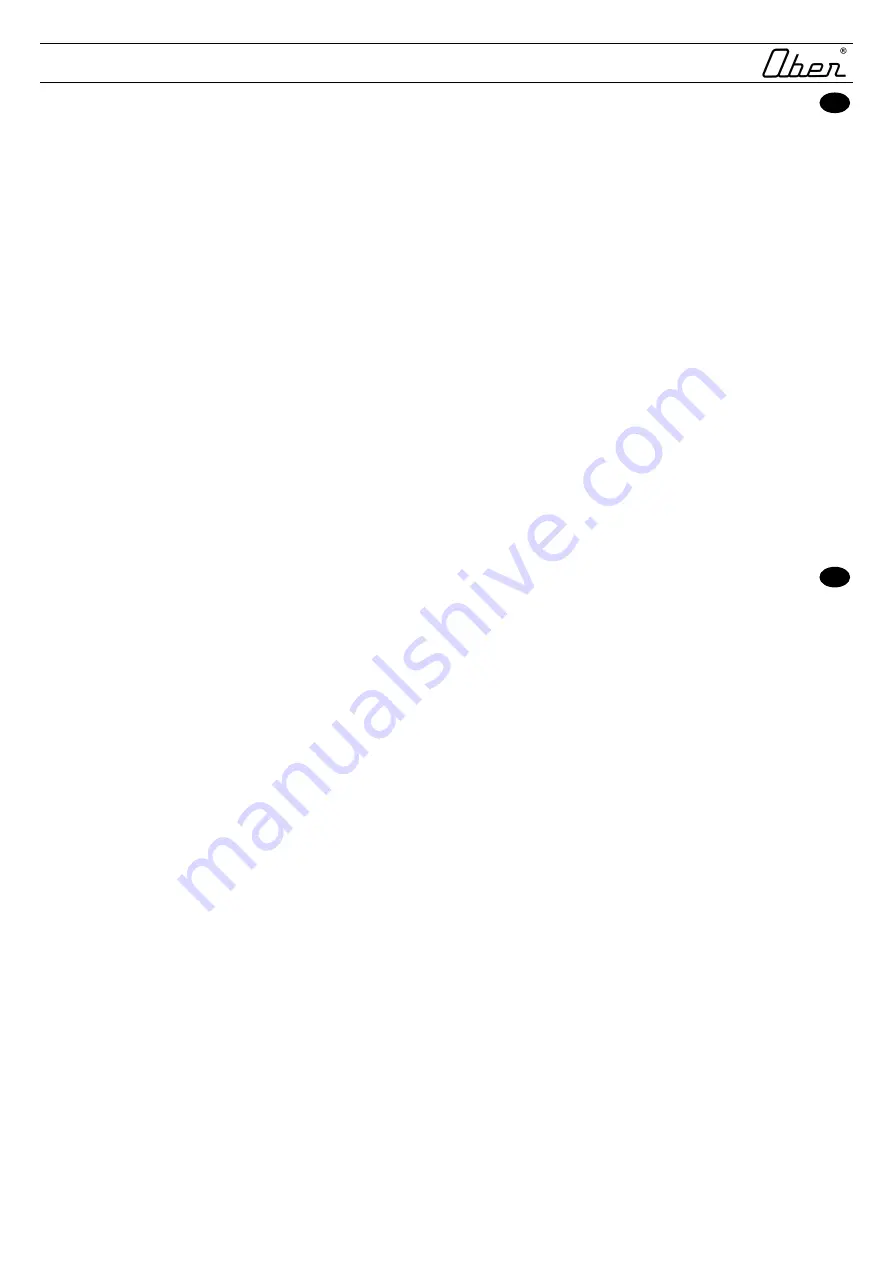
21
USE
GB
ERVIT, ERGOVIT and SUPERGOVIT screwdrivers are designed for driving threaded elements. Their performance
features are shown in table 1. Experience will indicate the best way to perform this operation according to: the type of
screw or nut; the shape of the pieces to be fastened; the working position etc.
STARTING THE TOOL
Clockwise rotation (to screw): push the switch (1) into the bottom position fig. A.
Counterclockwise rotation (to unscrew): push the switch (1) into the top position fig. B.
NOTE: to make the bit spin when the motor is running axial pressure must be exerted on the tool.
WARNING Manual rotation of the motor shaft of a machine which is not connected to the compressed air supply may
cause incorrect positioning of the impellers and consequent jamming of the machine itself. In this case, do not force the
movement but connect the machine to the compressed air supply and turn it on to solve the problem.
SCREWDRIVING
The normal sequence is: place the tool bit on the head of the screw; start the motor; press in the direction the screw is to
be driven until you hear the characteristic "tick" made by the teeth of the clutch which has reached the set torque; stop
the motor; check to make sure the screw is properly tightened and adjust the clutch if necessary.
WARNING: A firm grip must always be kept on the screwdrivers and, especially when the working conditions produce a
high level of kickback (>8 Nm), always use the special auxiliary handles (OBER code 5051407). These accessories can
reduce the operator’s work load and the stress deriving from the complex vibrations and kickback generated during use.
ATTACHMENT OF ACCESSORIES fig.3
Insertion: push firmly into the tool socket as indicated by the arrow until you hear the click of the spring that holds the tool
in place.
Removal: pull in the opposite direction.
Warning: to ensure operator safety, use only the accessories illustrated in the OBER catalogue.
UTILISATION
F
Les visseuses ERVIT, ERGOVIT, SUPERGOVIT, dont les performances sont indiquées dans le tableau 1, ont été
conçues pour le vissage d'éléments filetés. La pratique vous enseignera la meilleure façon pour effectuer cette opération
par rapport au: type de vis ou d'écrou; forme des pièces à serrer; position de travail, etc.
DEMARRAGE
Rotation à droite (vissage): appuyer sur la partie inférieure de la manette (1) fig. A
Rotation à gauche (dévissage): appuyer sur la partie supérieure de la manette (1) fig. B
REMARQUE: si le moteur est en marche pour faire tourner l'accessoire il faut exercer une pression axiale sur l'outil.
AVERTISSEMENT: En tournant à la main le cône du moteur d’une machine non reliée au réseau d’alimentation de l’air,
on peut provoquer un mauvais positionnement des palettes de poussée et, par conséquent, le blocage de la machine.
Dans ce cas, il ne faut pas essayer de forcer le mouvement, mais il suffit de brancher la machine au réseau
d’alimentation de l’air et de la mettre en marche pour éliminer cet inconvénient.
VISSAGE
La procédure normale est la suivante: saisissez la poignée de l’outil; mettez en route le moteur; appuyez en direction
axiale tout en suivant le vissage jusqu'à ce que vous entendiez le cliquetis des dents de la friction qui a atteint le couple
de serrage; arrêtez le moteur; contrôlez le serrage obtenu et éventuellement réglez la friction.
ATTENTION: Toujours maintenir une prise contrôlée des visseuses; utiliser les poignées auxiliaires (code OBER
5051407), spécialement si les conditions de travail sont telles qu’elles produisent un couple de réaction élevé (>8 Nm).
Ces accessoires peuvent réduire la fatigue de l’opérateur et les sollicitations dérivant du complexe vibrations-forces de
réaction qui sont générées au cours du fonctionnement.
MONTAGE DES ACCESSOIRES fig.3
Introduction: l'appuyer à fond sur le porte-outil, comme indiqué par la flèche, jusqu'à entendre le déclic du ressort
engageant l'outil dans son logement
.
Extraction: tirer dans le sens opposé
.
Avertissement: pour la sécurité de l’opérateur utiliser exclusivement des accessoires indiqués dans le catalogue OBER.
























